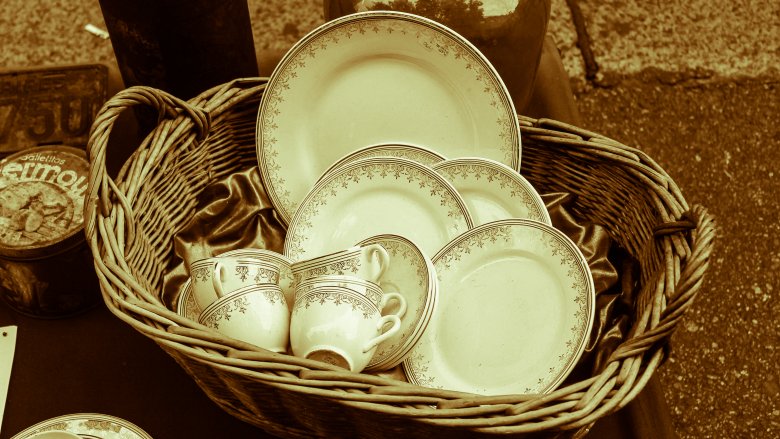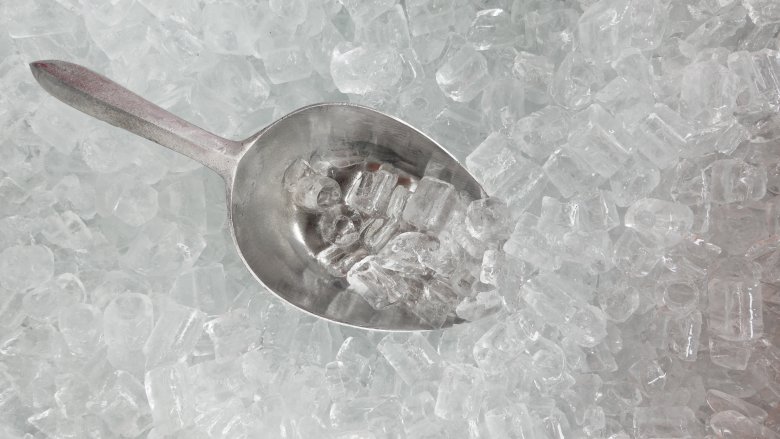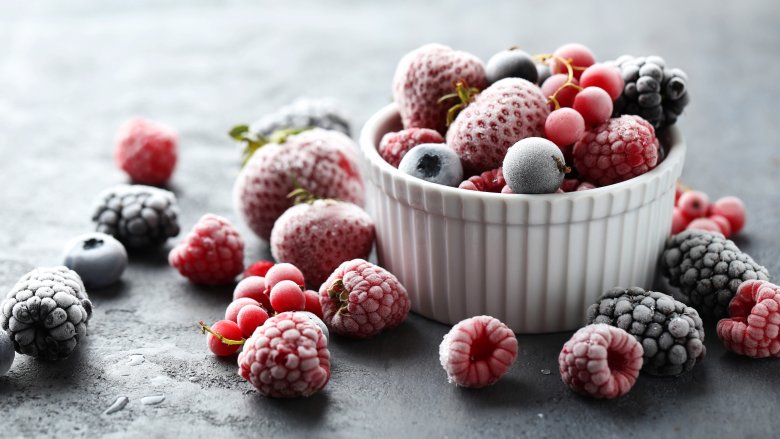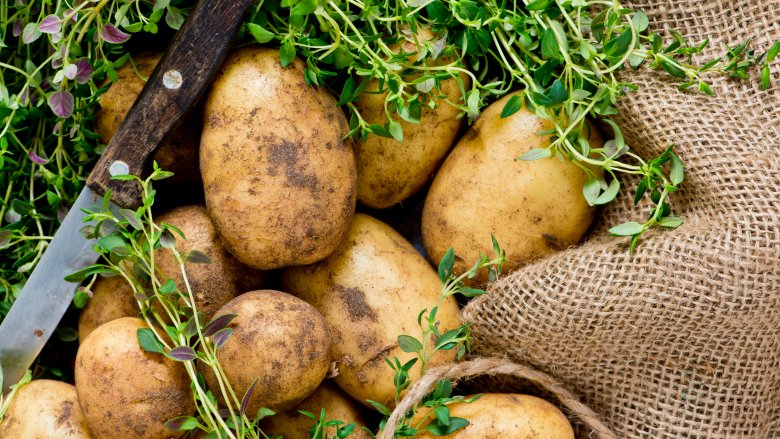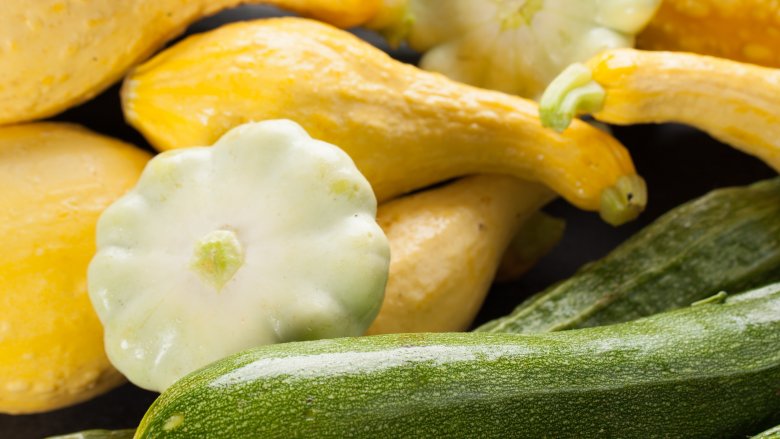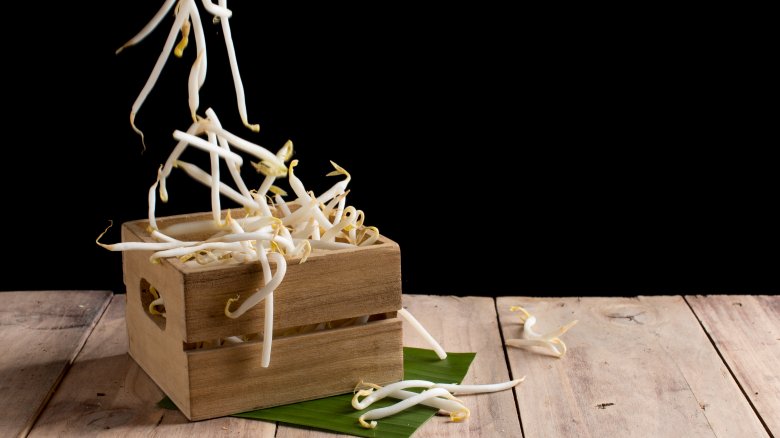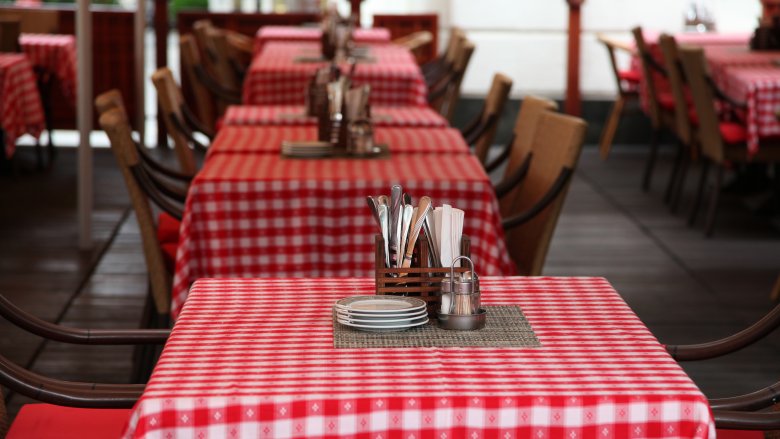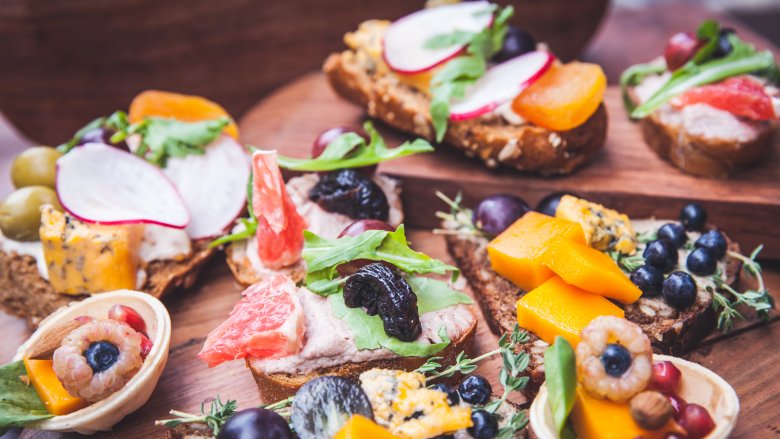Here's How You Avoid Food Poisoning
A case of food poisoning won't just ruin your evening, it'll ruin you for days. There are no rules or guidelines you can follow that will guarantee you'll never come down with a case of food poisoning from somewhere at some time, but there are some things you can look out for to make your meals much safer. While you're familiar with ones that fall under the jurisdiction of common sense — like recognizing the stink of bad seafood — there are others that are much, much sneakier and very easy to overlook. Keep reading to learn how to avoid some of the more hidden dangers that lurk in restaurants and home kitchens.
Toss chipped or cracked dishes (and be wary of old ones)
Everyone has their favorite coffee mug, pint glass, or plate that's been around forever. If you want to keep using them, you should take extra-good care of your favorites, because according to Dr. Melvin Pascall of the Department of Food Science and Technology at The Ohio State University, cracks in dishes, plates, and cups can be a haven for bacteria.
Skip the ice in your drinks
Chances are good you don't think twice about getting ice in your drink when you go out to eat, but you might want to rethink that.
According to a report by the UK's Health Protection Agency, they found traces of E.coli in about one in every 20 samples they tested from ice buckets and ice machines. They also found enterococci, and suggested the culprit was poor hygiene and employees not washing their hands properly after using the bathroom.
If that hasn't grossed you out yet, Huffington Post talked to two food safety experts: Dr. Pritish Tosh of the Mayo Clinic and Martin Bucknavage from the Department of Food Science at Penn State. According to them, inspectors have not only regularly found bacteria living in ice samples, but also say that both restaurants and homeowners tend to overlook the fact that mold can grow and thrive in ice machines. Warm drinks don't sound so bad now, right?
Watch out for ice cream
In 2015, Time reported on a listeria outbreak that claimed the lives of at least three people. The culprit was Blue Bell Creameries' ice cream, and according to the CDC, that's just the tip of the iceberg. Listeria causes about 1,600 cases of food poisoning a year, and it can grow in temperatures that hover just above freezing — about 40 degrees Fahrenheit. That means before ice cream is frozen completely, there's a potential for contamination.
You might consider that just one more reason to make your own ice cream, but the FDA has some warnings about that, too. They say homemade ice cream can also be a source of food poisoning, and the reason for that is that many recipes call for eggs that end up being raw or undercooked. They recommend swapping out regular eggs for egg substitute, pasteurized shell eggs, or pasteurized egg product to make sure your homemade ice cream is completely enjoyable and not filled with salmonella.
Boil your frozen berries
Frozen berries can feel like a lifesaver when fresh fruit is out of season, but according to health agencies across the globe, they're a sneaky source of hepatitis A that's made even sneakier by the fact that symptoms typically don't show up until anywhere from 15 to 50 days after infection, and that makes the source difficult to track down. In 2016, the Public Health Agency of Canada linked frozen cherries to a Hepatitis A outbreak across several provinces, and in 2015 two brands of frozen berries were recalled in Australia because of a link to hepatitis A. Ireland and Italy were hit with an outbreak in 2013, and according to the Food Safety Authority of Ireland, boiling any frozen berries for at least a minute is enough to kill any contaminants that might be on them.
Play it safe with potatoes
In 1979, 78 London schoolchildren and some of their teachers fell deeply ill. Some ended up falling into comas and having seizures, others had fever, circulatory and nervous system collapse, and hallucinations. All recovered, and the culprit was determined to be a bag of potatoes. According to the Smithsonian, the real danger is a toxin called solanine, the same thing present in nightshade.
There's an easy way to stay safe — don't eat potatoes that are starting to turn green. The toxin is in the green part, and while the kids were fortunate, there have been cases where solanine poisoning ended in death or permanent paralysis.
That's not the only danger, either. Potato salad is one of the common sources of staphylococcal food poisoning, so don't eat potato salad that's been sitting out at room-temperature few hours. And even baked potatoes have the potential to do some damage. They're known to harbor the bacteria that causes botulism, and it happens when they're kept at a temperature between 41 and 135 degrees Fahrenheit. Since botulism grows in low-oxygen environments, that makes a cooling, foil-wrapped baked potato the perfect place. Fortunately, it's an easy fix: take the foil off immediately, and definitely don't put it in the fridge with it still on.
Don't eat bitter squash
Have you ever bitten into a piece of squash and noticed a bitter, unpleasant taste? That's a sign that it's not only gone bad, but that it's producing a chemical called cucurbitacins. The resulting gastrointestinal illness is called toxic squash syndrome, and it can come from vegetables like squash, zucchini, melons, gourds, cucumbers, and pumpkin.
According to the Oregon Health & Science University's discussion on the syndrome, it's unclear just how common bitter squash are, but cooking the vegetables won't get rid of the toxin. The US Food Safety Blog says the toxin can be produced by the plant as a reaction to the presence of a high number of pests and insects, but domesticated plants can turn bitter for other reasons, too. Since only a few bites can cause severe illness, spit out any bitter-tasting squashes and get rid of the rest.
Be careful with raw sprouts
Sprouts can be a tasty, healthy addition to any meal, but they can be dangerous, too. According to the US Food Safety board, it's how sprouts are grown that makes them perfect vehicles for food poisoning. Sprouts are typically grown in warm, damp environments, and that's the exact type of environment E.coli and salmonella thrive in. It doesn't matter where you buy them — bacteria can grow in even the most sanitary conditions, because it only takes a few bacteria in the sprout seed to grow and spread.
Fortunately for sprout-lovers, cooking completely destroys the bacteria that's been linked to at least 30 outbreaks of food poisoning since 1996. Cook your sprouts, and you'll be fine.
Watch out for soft cheese
In 2015, people across nine US states became sick with listeriosis, a potentially fatal type of food poisoning. One person who took ill during this particular outbreak died, 21 were hospitalized, and one woman suffered a miscarriage because of it. The culprit was thought to be soft cheese, but that was never verified. The majority of patients had eaten soft cheese — like feta and string cheese — in the weeks before getting sick, making it the likely source.
Listeria can slip through the health and safety cracks for a few reasons. When it infects animals — and, in turn, their milk — there are generally no symptoms that show something's wrong. The bacteria can also survive through low temperatures that kill most other bacteria, and they can survive for years. The CDC points to soft cheese as a potential source because of how many places use unpasteurized milk in their manufacturing process. Since unpasteurized milk can be up to 160 percent more likely to cause illness, they say it's of the utmost importance to look for soft cheeses that specifically say on the label that they've been made with pasteurized milk.
Watch out at fairs and festivals
Summer wouldn't be complete without spending a few afternoons at a state fair, and half the fun is getting the cotton candy and candy apples you love. But since the CDC warns that picking up food at fair vendors comes with its own set of risks, there are some things you should look out for. Most vendors should display a license and inspection report (although laws vary by state). Peek inside and see if it's clean, if there's a sink for employees to wash in, and make sure they're using gloves or tongs.
Washington State University stresses just how important it is to make sure you wash your hands before you eat anything at a carnival or fair, too. There's a huge potential for you to cause your own instance of food poisoning: just think of all the things you're touching. From rides to animals in the barn, doors and fences, to carnival games, there's a huge potential for getting your hands covered in germs that can easily make you sick. Water isn't going to cut it alone, either, and neither are hand sanitizers. Use soap and warm water to help keep yourself safe.
What to look for in a restaurant
Every time you go out to eat, you're putting a huge amount of faith in a kitchen you can't see. You can't tell if health and safety guidelines are being followed behind those kitchen doors, but there are some things you can look for that'll help tell you whether or not you should sit down to your meal, or find another place.
Some red flags that you should turn around and walk right back out the door include some pretty obvious ones, like dirty utensils and condiment bottles that look less than sanitary. Dirty menus can be another sign, along with sticky tables and booths. If the wait staff can't be bothered to keep those things clean, that's a bad sign.
Also, check the bathrooms. A clean, spotless bathroom means staff are on top of their cleaning duties, but if you can't bring yourself to even use the bathroom, just leave. Watch for sick employees, and watch for how tables are cleaned. If staff is going from one table to the next using the same cloth, they're spreading some serious germs.
The basics for keeping your party buffet safe
No one wants to be stuck in the kitchen cooking while guests are at the house, so a buffet can be the perfect solution that lets you mingle, drink, and enjoy the party, too. The US's Food Safety board offers up some invaluable tips for making sure your buffet is safe, and it includes using small, shallow containers. That means you're going to have to refill them more often, but that's also going to keep a regular flow of fresh food at the proper temperatures. Keep an eye on the time — get rid of any perishables that have been out for more than two hours. And make sure you have stacks of small plates to encourage people to serve themselves a whole plate of something, rather than munching right from the table.
The FDA suggests that instead of putting out big platters, make up several small ones ahead of time and swap them out as needed. Store the back-ups in the fridge or the oven to keep them at the proper temperature. They also say that you should never refill a dish that's been sitting out, but instead replace it with a new one.
Staying safe when there's an FDA recall
The FDA issues recalls for products that have been proven to be linked to cases of food poisoning, and manufacturers will often recall products if there's even a chance it's going to make someone ill. You can head over to the FDA's page to sign up to receive email alerts when there's been a problem.
While that will definitely give you a heads' up if there's something in your fridge you need to get rid of, chances are there are other things you're going to need to do to make sure you and your family are safe. For things like listeria outbreaks and salmonella recalls, they recommended completely cleaning your refrigerator with a mixture of hot water and bleach to make sure there's no spread of bacteria. For hepatitis A outbreaks, they suggest unvaccinated individuals contact a health professional for a vaccine if exposure happened less than two weeks prior to the recall. Following their instructions is vital in keeping everyone safe and healthy.

